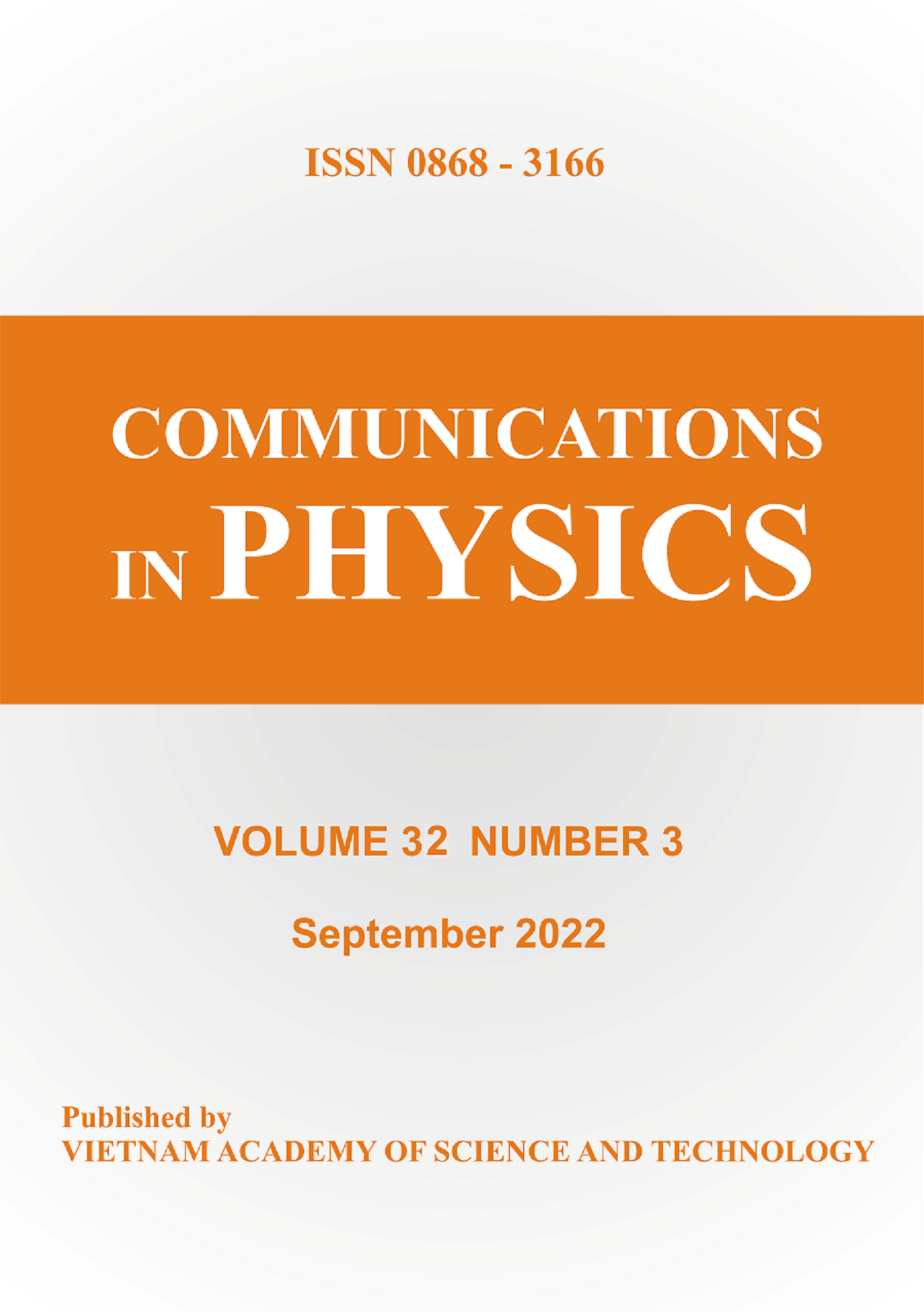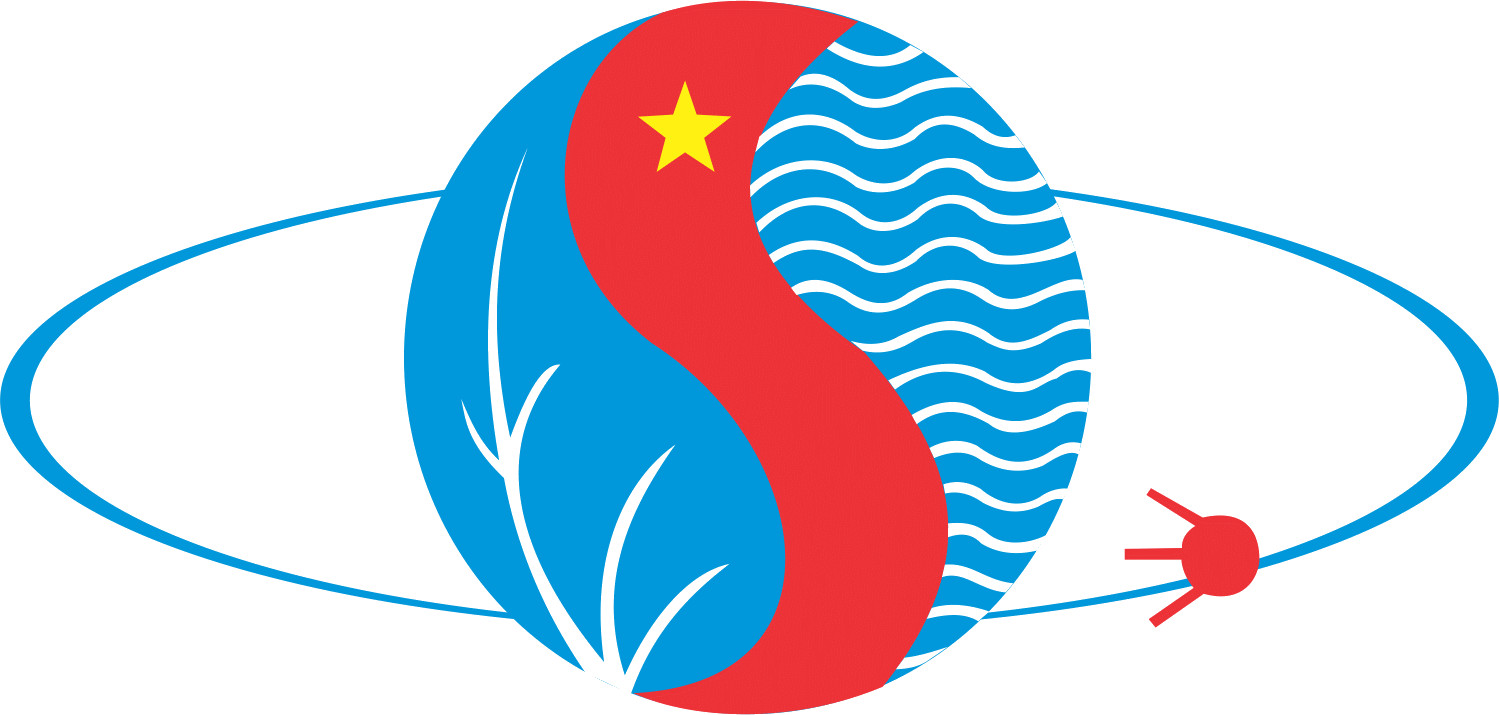Facile synthesis and electrical characteristics of n-SnO2/p-NiO nanowire heterojunctions
Author affiliations
DOI:
https://doi.org/10.15625/0868-3166/29/1/13510Keywords:
SnO2, NiO, p-n heterojunction, I-V characterizationAbstract
In the current work, we report a facile synthesis of n-SnO2/p-NiO nanowire heterojunctions by a drop-coating approach. The pure SnO2 and NiO nanowires (NWs) were grown by chemical vapor deposition (CVD) and hydrothermal methods, respectively. Morphology, composition and crystal structures of the NWs and heterojunctions were investigated by means of field emission scanning electron microscopy (FESEM), energy dispersive spectroscopy (EDS) and X-ray diffraction (XRD), respectively. The data showed that SnO2 NWs were grown with their average diameter of 200 nm and length of about 10 mm. The NiO NWs were also synthesized with a shorter average length and smaller average diameter compared to those of the SnO2 NWs. The EDS results indicated no impurity present in both SnO2 and NiO NWs. The XRD patterns pointed out the tetragonal rutile and cubic structures of SnO2 and NiO, respectively. Interestingly, electrical properties of the NWs and heterojunctions were studied through the Keithley 2602A sourcemeter-based I-V characterizations. The results confirm the nature of the metal semiconducting oxides. The formation of the n-SnO2/p-NiO heterojunctions was certified through the rectifying behavior of the I-V curves with the rectification ratio of about 5 at ± 3V and 350 oC. The potential energy barrier between the NWs was also estimated to be about 1.16 eV. The band energy structure was also proposed to get insight into characteristics of the n-SnO2/p-NiO heterojunction.Downloads
Metrics
References
R. Chen, G.Z. Xing, J. Gao, Z. Zhang, T. Wu, H.D. Sun, Characteristics of ultraviolet photoluminescence from high quality tin oxide nanowires, Appl. Phys. Lett. 95 (2009) 69–71. doi:10.1063/1.3205122.
![]()
S. Das, V. Jayaraman, SnO2: A comprehensive review on structures and gas sensors, Prog. Mater. Sci. 66 (2014) 112–255. doi:10.1016/j.pmatsci.2014.06.003.
![]()
B.O. Jung, Y.H. Kwon, D.J. Seo, D.S. Lee, H.K. Cho, Ultraviolet light emitting diode based on p-NiO/n-ZnO nanowire heterojunction, J. Cryst. Growth. 370 (2013) 314–318. doi:10.1016/j.jcrysgro.2012.10.037.
![]()
D.C. Kim, S. Seo, S.E. Ahn, D.S. Suh, M.J. Lee, B.H. Park, I.K. Yoo, I.G. Baek, H.J. Kim, E.K. Yim, J.E. Lee, S.O. Park, H.S. Kim, U.I. Chung, J.T. Moon, B.I. Ryu, Electrical observations of filamentary conductions for the resistive memory switching in NiO films, Appl. Phys. Lett. 88 (2006). doi:10.1063/1.2204649.
![]()
Y. Shen, X. Yan, H. Si, P. Lin, Y. Liu, Y. Sun, Y. Zhang, Improved Photoresponse Performance of Self-Powered ZnO/Spiro-MeOTAD Heterojunction Ultraviolet Photodetector by Piezo-Phototronic Effect, ACS Appl. Mater. Interfaces. 8 (2016) 6137–6143. doi:10.1021/acsami.5b12870.
![]()
Z. Zhang, C. Shao, X. Li, C. Wang, M. Zhang, Y. Liu, Electrospun nanofibers of p-type NiO/ n-type ZnO heterojunctions with enhanced photocatalytic activity, ACS Appl. Mater. Interfaces. 2 (2010) 2915–2923. doi:10.1021/am100618h.
![]()
H. Ohta, M. Hirano, K. Nakahara, H. Maruta, T. Tanabe, M. Kamiya, T. Kamiya, H. Hosono, Fabrication and photoresponse of a pn-heterojunction diode composed of transparent oxide semiconductors, p-NiO and n-ZnO, Appl. Phys. Lett. 83 (2003) 1029–1031. doi:10.1063/1.1598624.
![]()
C. Liu, M. Peng, A. Yu, J. Liu, M. Song, Y. Zhang, J. Zhai, Interface engineering on p-CuI/n-ZnO heterojunction for enhancing piezoelectric and piezo-phototronic performance, Nano Energy. 26 (2016) 417–424. doi:10.1016/j.nanoen.2016.05.041.
![]()
Q.T. Minh Nguyet, N. Van Duy, N.T. Phuong, N.N. Trung, C.M. Hung, N.D. Hoa, N. Van Hieu, Superior enhancement of NO2gas response using n-p-n transition of carbon nanotubes/SnO2nanowires heterojunctions, Sensors Actuators, B Chem. 238 (2017) 1120–1127. doi:10.1016/j.snb.2016.07.143.
![]()
C.M. Hung, D.T.T. Le, N. Van Hieu, On-chip growth of semiconductor metal oxide nanowires for gas sensors: A review, J. Sci. Adv. Mater. Devices. 2 (2017) 263–285. doi:10.1016/j.jsamd.2017.07.009.
![]()
D.D. Trung, N. Van Toan, P. Van Tong, N. Van Duy, N. Duc, Synthesis of single-crystal SnO 2 nanowires for NO x gas sensors application, Ceram. Int. 38 (2012) 6557–6563. doi:10.1016/j.ceramint.2012.05.039.
![]()
M. Ghosh, K. Biswas, A. Sundaresan, C.N.R. Rao, MnO and NiO nanoparticles : synthesis and magnetic properties, (2006) 106–111. doi:10.1039/b511920k.
![]()
R. Singh, A.K. Narula, Junction properties of aluminum/polypyrrole (polypyrrole derivatives) Schottky diodes, Appl. Phys. Lett. 71 (1997) 2845–2847. doi:10.1063/1.120151.
![]()
R.K.Ã. Gupta, K. Ghosh, P.K. Kahol, Fabrication and characterization of NiO / ZnO p – n junctions by pulsed laser deposition, 41 (2009) 617–620. doi:10.1016/j.physe.2008.10.013.
![]()
R.F. Sputtered, H. Diodes, S.K. Sharma, B. Bhowmik, V. Pal, C. Periasamy, Electrical and Methanol Sensing Characteristics of, 7332 IEEE SENSORS J. 17 (2017) 7332–7339.
![]()
C.A. Amorim, E.P. Bernardo, E.R. Leite, A.J. Chiquito, Effect of inhomogeneous Schottky barrier height of SnO2nanowires device, Semicond. Sci. Technol. 33 (2018). doi:10.1088/1361-6641/aab69e.
![]()
C. Rödl, A. Schleife, Photoemission spectra and effective masses of n- and p-type oxide semiconductors from first principles: ZnO, CdO, SnO 2 , MnO, and NiO, Phys. Status Solidi. 211 (2014) 74–81. doi:10.1002/pssa.201330181.
![]()
W. Tang, J. Wang, 1D NiO-SnO 2 Heterojunction Nanofibers as Acetone Sensor, Electron. Mater. Lett. 2016 (2016) 172–176. doi:10.18502/kms.v1i1.581.
![]()
Downloads
Published
How to Cite
Issue
Section
License
Authors who publish with CIP agree with the following terms:- The manuscript is not under consideration for publication elsewhere. When a manuscript is accepted for publication, the author agrees to automatic transfer of the copyright to the editorial office.
- The manuscript should not be published elsewhere in any language without the consent of the copyright holders. Authors have the right to enter into separate, additional contractual arrangements for the non-exclusive distribution of the journal’s published version of their work (e.g., post it to an institutional repository or publish it in a book), with an acknowledgement of its initial publication in this journal.
- Authors are encouraged to post their work online (e.g., in institutional repositories or on their websites) prior to or during the submission process, as it can lead to productive exchanges or/and greater number of citation to the to-be-published work (See The Effect of Open Access).
Accepted 20-02-2019
Published 23-02-2019













